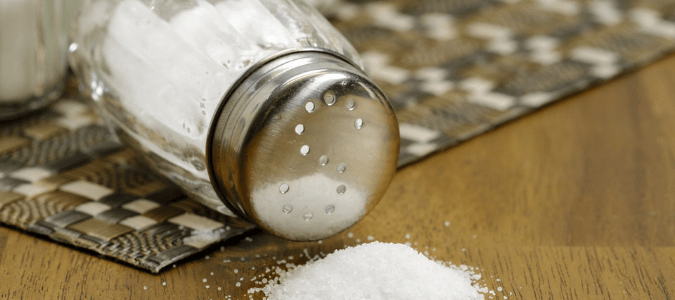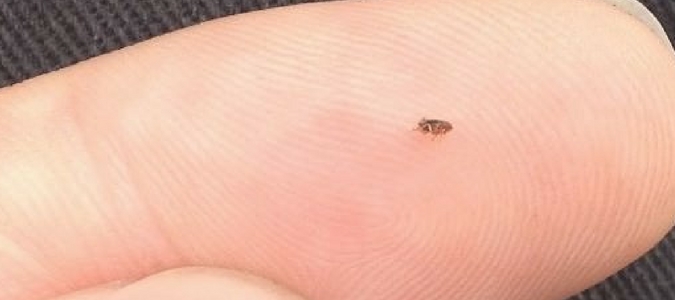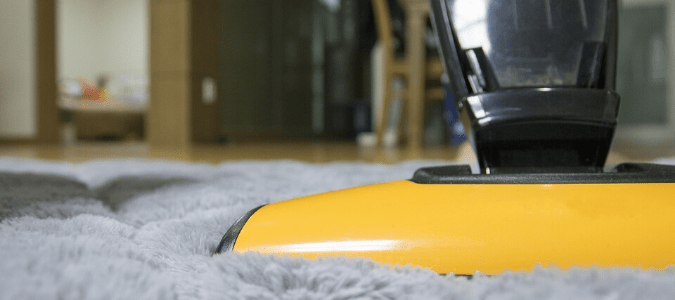Fleas can invade your home by hanging onto your pet or another animal in your neighborhood. Once these pests make it into your house, they often spread quickly and can be tough to get rid of. Thankfully, a pest control professional can help you free your house of fleas and reclaim your home from these pests as soon as possible. However, if you prefer to handle the infestation on your own, there are a number of flea control options that you might consider.
A common natural remedy for controlling fleas is to spread table salt or sea salt that you might have in your cabinet. Salt naturally absorbs moisture, so when you sprinkle it on fleas, it dries out their bodies. This is because many pests like fleas take in oxygen through tiny tubes all over their bodies. When they breathe in salt through these tubes, it can kill them
To use this flea control method, it is best to use extra-fine salt. You can make at home by using an appliance like a blender or food processor to grind the salt into a powder. Once the salt is ready, put on a mask to avoid inhaling the salt dust. Then, sprinkle the salt on upholstered furniture, rugs, carpeting and other areas where the fleas might be hiding.
Brush the salt into the fibers of the fabric and then let it rest. Be careful to avoid stepping or sitting on these treated areas during this time. After the salt has set for around 12 hours to two days, thoroughly vacuum the areas where you spread the salt. This will remove both the salt and any flea eggs or remains. Next, throw away your vacuum bag or thoroughly wash out the vacuum canister to help prevent the possibility of a reinfestation.
While there is evidence that salt can be used to kill fleas, there are also many downsides to this method. For one, it can be difficult to avoid the area for the length of time that it takes for the salt to do its job. Plus, if you step or sit on salted areas, you risk tracking salt all over your house. This will also reduce the chance that the salt treatment will work.
Additionally, any salt that is left behind can damage your carpet and other fabric surfaces. This leftover salt can cause these materials to wear out. What is worse is that salt is only helpful for killing fleas that are in or on your home’s surfaces. There will still be fleas on your pets. Salt can actually irritate your pet’s skin and can be harmful to pets if they lick or eat it. If you do not get rid of the fleas in both places—on your pet and your home’s surfaces—then there is a good chance that the fleas will take over your home once again.
Beyond salt, there are other home remedies that you might find online and consider trying. For example, some people have claimed that things like garlic, cedar bedding, Brewer’s yeast, baking soda and plant-based insect repellents like citrus oil extracts, coconut oil or herbal sachets can help with flea control. However, there is little scientific proof that these natural remedies are effective.
Overall, it is important to take proactive measures to help control flea populations. This includes regularly washing pet bedding in hot water and bathing pets regularly. It is also wise to frequently go through your pet’s hair with a flea comb and dip the comb in soapy water or another solution designed to kill fleas. Additionally, it is essential to frequently vacuum carpets, rugs and other fabric surfaces. It’s also helpful to vacuum often under furniture like beds, chairs and couches. Whenever you vacuum, be sure to throw away vacuum bags or clean out vacuum canisters.
It can be overwhelming when you have a flea infestation, but thankfully, you do not have to deal with this all on your own. One of the best ways to control flea populations is to contact a flea control specialist. A trusted professional can help you understand your options for treating flea infestations.
How Small are Fleas?
Fleas are tiny, even once they reach adulthood. Adult fleas are only about a twelfth of an inch long. This is slightly bigger than the thickness of two credit cards stacked together. Their bodies are usually black or dark brown, and they are wingless with six legs. Because these pests are so small, fleas often look like pepper or dark specks to the human eye.
Baby fleas are even smaller. They start as eggs that are smaller than a grain of sand. These eggs hatch into white larvae with brown heads that are about a fiftieth of an inch long. That is smaller than the thickness of a credit card. These wormlike larvae feed on organic materials like dead skin, food particles and adult flea poop. When the larvae are full, their bodies turn a purplish color. Eventually, they spin white silk-like cocoons, where they live for about a week to 10 days before they turn into adults.
Since fleas are so tiny, you might not see the fleas but instead, notice signs of a flea infestation. Fleas feed on the blood of mammals like humans, dogs, cats, rodents and foxes, which they bite. Depending on how sensitive you or your pet are to fleas, their bites can cause an allergic reaction.
When pets get bitten by fleas, they might lose their hair and scratch so hard that their skin becomes raw and infected. Plus, fleas can sometimes transmit diseases through their bites. If pets ingest fleas while licking or scratching bites, they can get tapeworms. Humans can also suffer from itchy and painful skin lesions or small welts. These often appear on lower legs and ankles where fleas usually bite people. These kinds of reactions typically do not appear until about 12 hours to 1 day after a flea bites a person.
If your pet starts itching more than usual or you notice itchy bumps on your skin or that of a family member or pet, then these could be signs of a flea infestation. Another possible sign is if you find specks dried of blood in your pet’s bedding or on your clothes or sheets.
As soon as you notice these and other signs that there might be fleas in your home, it is wise to contact a trusted professional. These specialists have experience in identifying and treating flea infestations. Fleas can be difficult to get rid of through DIY methods because you must be sure to tackle every single flea in your home. Otherwise, if you miss killing even a few fleas, then you might have these pests as your houseguests for quite a long time.
Many factors make these pests difficult to get rid of. For one, fleas have powerful legs that can propel them as far as 13 inches. This means they can jump onto you or your pet from a distance. Fleas often live and feed on other common neighborhood critters, such as squirrels and raccoons. This means fleas can spread to curious pets who chase after these animals or nose around their homes.
Additionally, fleas reproduce quickly. Adult female fleas can lay nearly 30 eggs each day and can live for several days—even when they are not attached to a food source like your dog. This means that a few fleas can quickly turn into a full-blown infestation.
Even more worrisome is that fleas are experts at hide and seek. They can lay dormant in their cocoons for months and will not emerge until there is an animal nearby for them to bite. This means that you might not realize there are fleas in your home or yard until after they bite you. By then, hundreds of fleas might already be making themselves at home in your personal space.
Where Do Fleas Hide?
There are several areas around your home and property where fleas might hide out. Inside a home, fleas often hide in places like rugs, carpeting, cracks in the floor, the edges of pet beds, under furniture, between couch cushions or in crevices of other pieces of furniture. Outdoors, fleas often hide out in places where pets or other animals typically rest. This might include areas like shady spots under the porch, by a pet’s favorite bush or inside a doghouse or kennel.
Fleas are good at hiding, which is frustrating because these pest populations can grow out of control. Contacting a professional is often the most efficient way to get rid of fleas. When you contact a pro, you can avoid the headache of dealing with a flea infestation all on your own.
ABC Can Treat Your Flea Problem Thoroughly
Addressing a flea problem on your own can end up drawing out the infestation. Instead of trying DIY efforts, contact ABC Home & Commercial Services. We can create a thorough flea treatment plan, so you and your family members can feel comfortable again.



